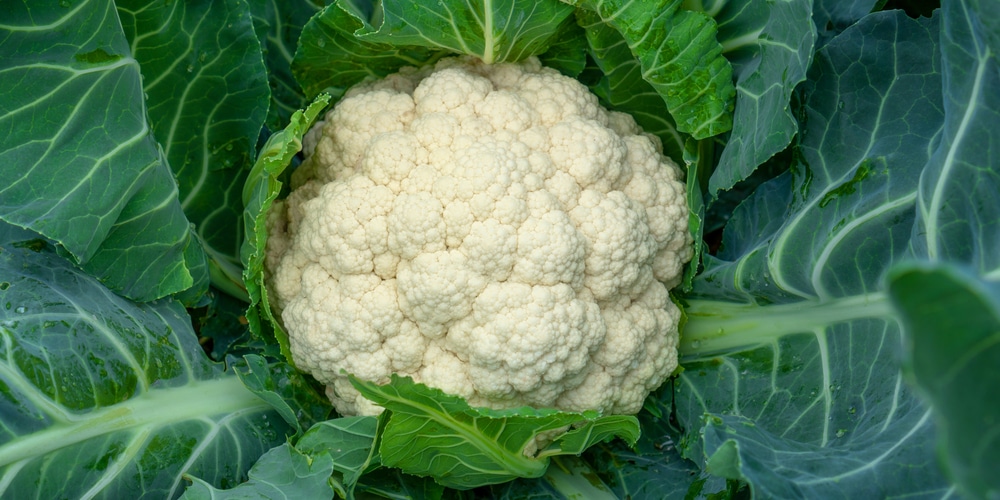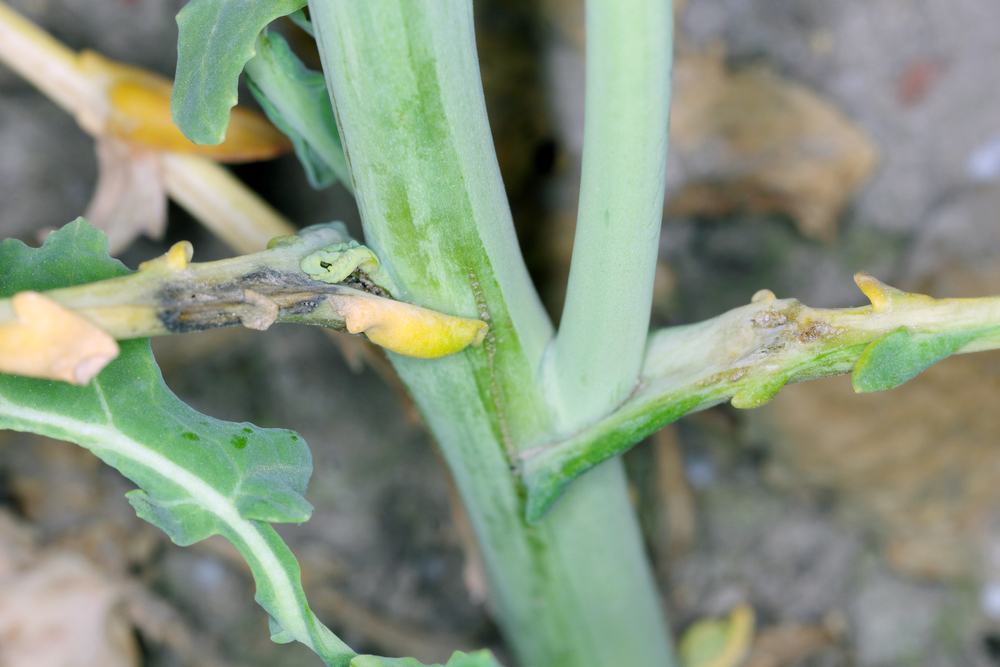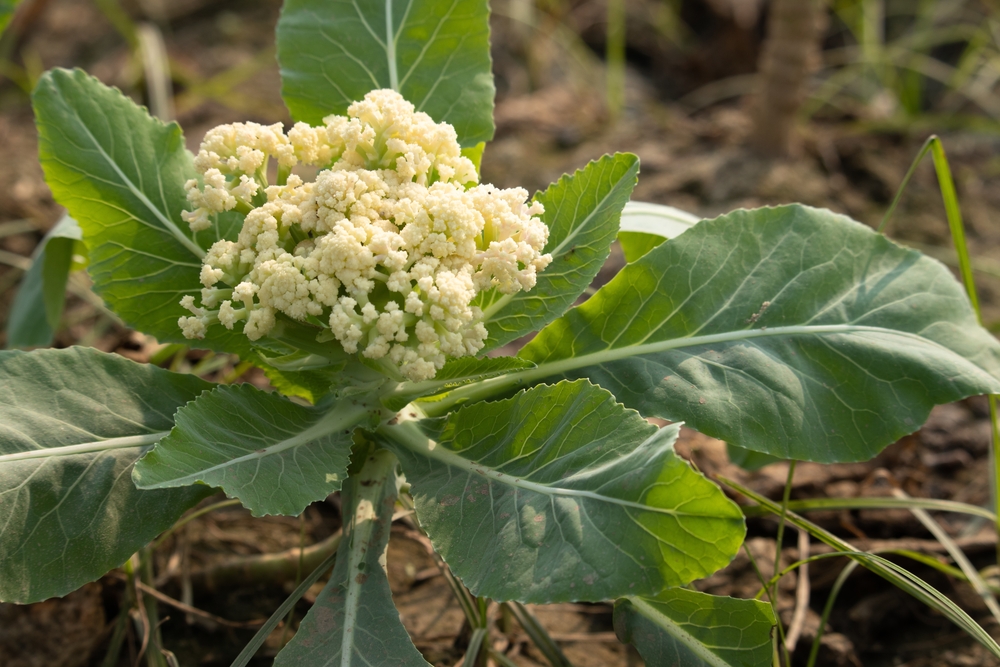Anyone who has ever grown cauliflower knows that the journey to harvest is not always easy. Cauliflower plants are susceptible to various problems, including pests, diseases, and nutrient deficiencies. One of the most common issues is yellowing leaves. There are several reasons why leaves may turn yellow, and luckily, there are also several solutions that can help.
Cauliflower Plant: Brief Plant Description and Characteristics
With its large, white head and thick green leaves, the cauliflower plant is a striking sight in any garden. And while most people think of cauliflower as a vegetable, it is actually a member of the mustard family.
Cauliflower heads are made up of tiny flowers that are tightly clustered together. And when the head is cut from the plant, these flowers open up and resemble miniature trees.
Its green leaves are thick and glossy, and they provide the plant with much of its nutrients. The leaves also help to protect the developing head from pests and diseases.
Cauliflower Leaves Turning Yellow: Possible Causes
Typically, throughout the growing season, its leaves need to be a deep, vibrant green. But sometimes, they may turn yellow. Keep reading to learn about some of the most common causes of yellowing leaves on cauliflower plants.
Aphid Infestation
One possible reason your cauliflower leaves might turn yellow is that they’re affected by pests. Aphids, in particular, are small but mighty pests that can wreak havoc on cauliflower plants. These tiny creatures suck the sap out of plants, causing the leaves to turn yellow and eventually die. In addition to aphids, pests that can also damage the plant and cause the leaves to turn yellow are whiteflies, mites, and cabbage loopers.
Verticulum Wilt and Other Fungal Diseases
One other reason for yellowing cauliflower leaves is a disease. While there are a number of different diseases that can affect cauliflower plants, one of the most common is verticillium wilt.
Verticillium wilt is a type of fungal disease that enters the plant through the roots and then spreads throughout the stem. As the disease progresses, it will cause the leaves to turn yellow and eventually die.
Another common disease that the plant is susceptible to is clubroot. Clubroot is a soil-borne disease that infects the plant’s roots, causing them to swell and deform. This, in turn, prevents the plant from taking up water and nutrients, which causes the leaves to turn yellow and eventually die.
Nutrient Deficiencies
While there can be several causes of why leaves are turning yellow, the most likely culprit is a nutrient deficiency. Nitrogen, in particular, is essential for the production of chlorophyll, the green pigment that gives plants their color. And when plants don’t have enough nitrogen available, they will start to produce less chlorophyll, causing their leaves to turn yellow. In some cases, other nutrients like potassium and magnesium may also be deficient.
Too Much Heat, Wind, Sun, and Other Environmental Stressors
Environmental stressors are also one of the most common causes of yellowing cauliflower leaves. Too much sun, wind, or heat can cause the leaves to turn yellow and dry out. Additionally, drought is another common stressor that can lead to stunted growth and eventually cause the leaves to turn yellow and die. And in some cases, poor drainage can also cause problems for cauliflower plants by depriving them of oxygen and causing the roots to rot.
How to Prevent Cauliflower Leaves from Turning Yellow?
Protecting your cauliflower plants from pests, diseases, and nutrient deficiencies is the best way to prevent cauliflower leaves from turning yellow. Some tips that can help include:
Regularly Check for Pests
Check your plant regularly for common pests. If you see any of these pests on your plant, take immediate action to remove them. There are a number of ways to remove pests, such as using insecticidal soap or Neem oil. Additionally, you can also try making a homemade pest spray by mixing 1 part dish soap with 9 parts water. Simply spray the solution on the pests, and they should die within a few days.
Ensure the Plant is in a Healthy and Disease Free Environment
This includes making sure the soil is well-drained and providing adequate water. With the diseases mentioned earlier, it’s important to take preventive measures to ensure your plant doesn’t become infected.
To avoid verticillium wilt, make sure to plant your cauliflower in an area that has good drainage. Additionally, you can also try solarizing the soil, which is a process of using the sun’s heat to kill diseases and pests in the soil. As for clubroot, you can avoid this disease by planting your cauliflower in raised beds. This ensures that the roots have good drainage and aren’t sitting in waterlogged soil.
Additionally, it’s important to practice crop rotation. This means planting your cauliflower in a different location each year. This helps to prevent the build-up of diseases in the soil and keeps your plants healthy.
Ensure the Plant Is Getting Enough Nutrients
Like all plants, cauliflower needs a regular supply of nutrients to stay healthy and produce abundant leaves. To prevent your plant from having nutrient deficiencies, fertilize your cauliflower plants regularly using a high-quality fertilizer.
Provide at Least an Inch of Water Weekly
One of the easiest ways to keep your cauliflower leaves from turning yellow is to make sure that the plant is getting enough water. Cauliflower is a thirsty vegetable, and it needs about an inch of water per week, either from rainfall or irrigation. During hot summer days, you may need to water your plants more frequently to prevent the leaves from wilting.
Final Thoughts
Cauliflower is a plant that is susceptible to a number of different problems, one of which is leaves turning yellow. There are a number of different reasons why this may happen, including pests or diseases, nutrient deficiencies, and environmental stressors.
Luckily, there are a few simple steps that you can take to prevent your cauliflower leaves from turning yellow. By following the tips above, you can keep your cauliflower plants healthy and free from problems. Cauliflowers are a fantastic fall vegetable as they are easy to grow and cope with cooler weather.


